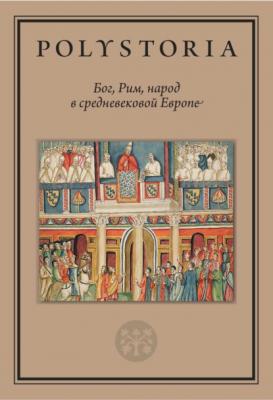ТОП просматриваемых книг сайта:
Бог, Рим, народ в средневековой Европе. Коллектив авторов
Читать онлайн.Название Бог, Рим, народ в средневековой Европе
Год выпуска 2021
isbn 978-5-7598-2285-1
Автор произведения Коллектив авторов
Жанр История
Серия Polystoria
Издательство Высшая Школа Экономики (ВШЭ)
16
Grabar A. Martyrium: Recherches sur le culte de reliques et l’art chrétien antique: en 2 vols. Vol. 1. P., 1946. P. 164–165; Brandenburg H. Ancient Churches of Rome. Turnhout, 2005. P. 50, 264.
17
См.: Schmuck N. Op. cit.; несколько иную схему см. в: Lange D. Op. cit. S. 93–101.
18
Библиографию см. в: Lange D. Op. cit.; Schmuck N. Op. cit.
19
«The Byzantine architects who, toward the end of the eighth or the beginning of the ninth century, introduced the cross-in-square plan had never heard of these fire temples, nor were they aware of the second-century “praetorium” of Musmiye in Syria, which has been dragged into the discussion because its ceiling was supported on four freestanding columns, nor, in all probability, of the audience hall of al-Mundhir at Resafa» (Mango C. Byzantine Architecture. N.Y., 1976. P. 178).
20
Ср. выше, примеч. 12.
21
Библиографию см. в: Lange D. Op. cit.; Schmuck N. Op. cit.
22
«Controversal even when published; today virtually all scholars regard these theories as lacking support» (Kleinbauer E. Early Christian and Byzantine Architecture: An Annotated Bibliography and Historiography. Boston, MA, 1992. P. 319–320); см. также: Maranci C. Medieval Armenian Architecture: Constructions of Race and Nation. Louvain, 2001. Не касаясь здесь сложнейшего вопроса о соотношении, в том числе хронологическом, византийских церквей на четырех опорах и иранских «чахар-таков», напомним лишь, что большинство последних имеет Г-образные опоры (см., например: Besenval R. Technologie de la Voûte dans l’Orient Ancien. P., 1984. Pl. 199–216), так что их следует сопоставлять скорее с церквями с трехсторонним обходом (ср. ниже, о Египте; см. также: Krautheimer R. Early Christian and Byzantine Architecture. Hammondsworth, 1965. P. 246).
23
Zäh A. Zur Typologie kirchlicher Architektur im südwestlichen Kleinasien: Diss. Maintal, 2003. S. 83–84.
24
Об армянских и грузинских «автохтонистских» гипотезах такого рода см.: Plontke-Lüning A. Frühchristliche Architektur in Kaukasien. Die Entwicklung der christlichen Sakralbaus in Lazika, Iberien, Armenien, Albanien und den Grenzregionen vom 4. bis zum 7. Jh. Wien, 2007. S. 310–312. (Österreichische Akad. der Wissenschaften, philosophisch-historische Klasse Denkschriften; 359). (Veröffentlichungen zur Byzanzforschung; 13).
25
См.: Казарян А.Ю. Церковная архитектура стран Закавказья VII века: Формирование и развитие традиции: в 4 т. М., 2012–2013.
26
Он пришел, вероятно, из Сирии, на связь Текорского храма с которой указывают также его посвящение св. Сергию и ранние сирийские граффити на его стенах (см.: Паглазова Н.М. Текор – храм князей Камсараканов // Архит. наследство. 2009. Вып. 50. С. 5–16).
27
См.: Там же.
28
Plontke-Lüning A. Op. cit. Kat. S. 311–317; там же см. библиогр.; ср. также: Donabedian P. Ereruyk: nouvelles données sur l’histoire de la site et de la basilique // Mélanges Jean-Pierre Mahé. P., 2014. P. 241–284. (Traveaux et mémoires; 14).
29
См.: Казарян А.Ю. Кафедральный собор Сурб Эчмиадзин и восточнохристианское зодчество IV–VII веков. М., 2007; Plontke-Lüning A. Op. cit. S. 312.
30
См.: Mongiello L. Chiese di Puglia. Il fenomeno delle chiese a cupola. Bari, 1988. P. 20; Puglia preromanica. Dal V secolo agli inizi dell’XI / a cura di G. Bertelli. Bari; Milano, 2004. P. 67–72.
31
Библиографию см. в: Lange D. Op. cit.; Schmuck N. Op. cit.
32
Ср. выше, примеч. 19.
33
Krautheimer R. Op. cit. P. 246–247.
34
См., например: Smith B. The Dome: A Study in the History of Ideas. Princeton, NJ, 1950. P. 111–115. (Princeton Monographs in Art a. Archaeology).

